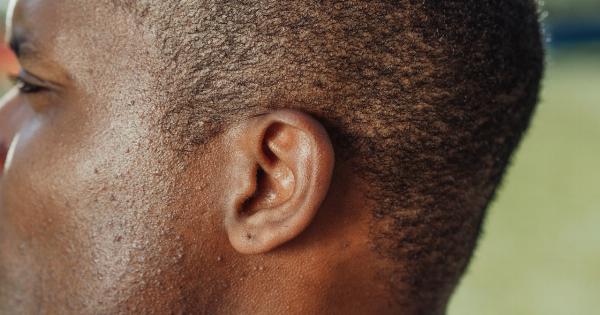Hearing loss is a common problem faced by millions of people worldwide. It can be caused due to various reasons such as genetics, exposure to loud noise, infections, aging, and more.
However, the underlying molecular mechanisms of hearing loss are not well understood. Recent research has shown that a protein “key” plays a crucial role in the development of hearing loss. In this article, we will delve into the details of this protein and understand how it affects hearing.
What is the Protein “Key”?
The protein “key” is also known as the Transient Receptor Potential Vanilloid 1 (TRPV1) protein. It is a sensory protein found in the cochlea, a part of the inner ear responsible for hearing.
The TRPV1 protein is a receptor that responds to different stimuli such as heat, pain, and sound. It acts as a “gatekeeper” that allows ions to pass through channels in the cell membrane of hair cells in the cochlea.
The Role of TRPV1 Protein in Hearing Loss
Studies have shown that the TRPV1 protein plays a significant role in the development of hearing loss. When the protein is activated due to loud noise exposure, it leads to an influx of calcium ions.
This influx of calcium ions can potentially damage the hair cells in the cochlea, leading to hearing loss. Moreover, the prolonged activation of the TRPV1 protein can also cause inflammation and oxidative stress, further contributing to hearing loss.
Genetic Mutations and TRPV1 Protein
Genetic mutations in the TRPV1 protein have also been linked to hearing loss. The mutations in the protein alter its function, leading to a dysregulation of ion channels.
This can cause various hearing impairments, including sensorineural hearing loss, which is the most common type of hearing loss. Apart from hearing loss, genetic mutations in the TRPV1 protein have also been linked to various other health conditions such as chronic pain, migraine, and more.
Treating Hearing Loss – Targeting the TRPV1 Protein
The TRPV1 protein has emerged as a potential therapeutic target for treating hearing loss. Researchers have identified several compounds that can modulate the activity of TRPV1 protein, leading to a reduction in hearing loss.
One such compound is Capsaicin, a chemical compound found in chili peppers. Capsaicin has been shown to reduce the activity of TRPV1 protein and prevent the influx of calcium ions, thereby protecting the hair cells in the cochlea.
However, more research is needed to develop safe and effective treatments targeting the TRPV1 protein.
Preventing Hearing Loss – Protecting the TRPV1 Protein
Preventing hearing loss is always better than treating it. Protecting the TRPV1 protein can potentially prevent hearing loss due to loud noise exposure.
Various natural compounds such as antioxidants, polyphenols, and Omega-3 fatty acids have been shown to protect the TRPV1 protein and prevent its dysregulation. Moreover, an overall healthy lifestyle such as a balanced diet, regular exercise, and avoiding exposure to loud noises can also protect the TRPV1 protein and prevent hearing loss.
Conclusion
The TRPV1 protein plays a crucial role in the development of hearing loss. It acts as a “gatekeeper” that allows ions to pass through channels in hair cells in the cochlea.
When the protein is dysregulated due to loud noise exposure or genetic mutations, it can cause various hearing impairments such as sensorineural hearing loss. Researchers have identified the TRPV1 protein as a potential therapeutic target for treating hearing loss, and various compounds have been identified that can modulate its activity.
Moreover, protecting the TRPV1 protein can potentially prevent hearing loss due to loud noise exposure.






























